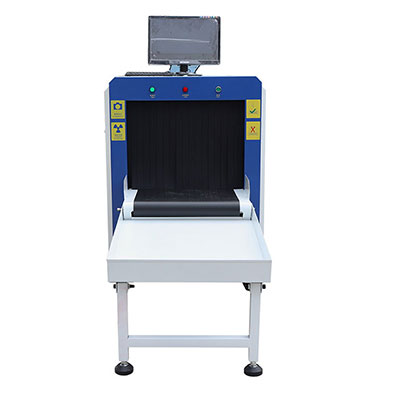©Copyright 2002-2025 JKDC Security Co., Limited. All rights reserved. Privacy Policy | Terms and Conditions Site Map
Provide One-stop Security Solution for a Safer World
For people working as a customs and border control officer or law enforcement agent or even as security personnel, then it will be an added advantage to your skills to know how different X-ray baggage scanner technologies work.
Just like you may already know, x-ray baggage scanner helps to protect people, their assets as well as yourself from danger.
So, in this article, you'll be going through some overview of the major differences that exist between the various x-ray technologies out there.
But before you rush out to buy one after reading the post, there is one thing you must consider before investing in any of these x-ray scanner technology.
That is, buying x-ray baggage scanner from a professional x-ray scanner manufacturer that can give you the best x-ray scanner for your money.
So, that being said, let’s take a quick look at the major differences you should expect from the various x-ray baggage scanner technologies in the marketplace.
Currently, there are 4 major x-ray baggage scanner technologies for scanning and screening of persons and cargo. These are:
1. Computerized Tomography (CT)/3D
The CT x-ray technology employs multiple x-ray detectors that revolve around an object to create a 2D image of the object.
As the object place on the conveyor continues to move forward, a 3D image of the object is created.
Once the 3D image of the object is created, a scanned image of the object can be viewed from all angles with the use of computer projection techniques.

2. Backscatter
The backscatter x-ray technology scans across and objects to produce two images; a backscatter image and a normal transmission image.
The backscatter x-ray technology is most adapted to a low atomic (Z) number elements from where it measures their density.
3. Dual-Energy/Single or Dual View
In the dual-energy x-ray technology, x-ray beams produced peaks at two different energy level.
In most cases, the high energy beams usually suffer a lesser absorption while the low energy beams are responsible for making light elements darker.
As these continue, images from the various energy levels are compared to show light vs heavy elements and also to give a clear difference between inorganic and organic as well as opaque (metal) materials from each other.
The dual-energy technology is categorized into both the single view and the more advanced dual view
Dual-view
As the suggests, the dual view x-ray technology has two x-ray sources that give both a horizontal and a vertical view of the screened cargo and luggage simultaneously.
The dual-view x-ray technology gives the operator a better identification of objects in a screened luggage.
4. Standard/Single View
In the standard/single view x-ray baggage scanner, the x-ray beam is passed through detectors and objects which are placed opposite to the beam for the measurement of x-ray absorption.
As the beam measures the x-ray absorption, images produced are usually greyscaled, and the services of an experienced operator are usually needed to identify objects that are tagged potential threats.
Bottom Line
X-ray baggage scanner technologies have come of age with different technologies to detect the least and smallest object of threat.
The various types of x-ray technologies available include Computerized Tomography (CT)/3D, backscatter, dual-energy/single or dual view, and standard/single view technology.
However, your choice for any of these depends on your intended use. And when sourcing for x-ray baggage scanner, it is best to partner with a trusted manufacturer for the best products.